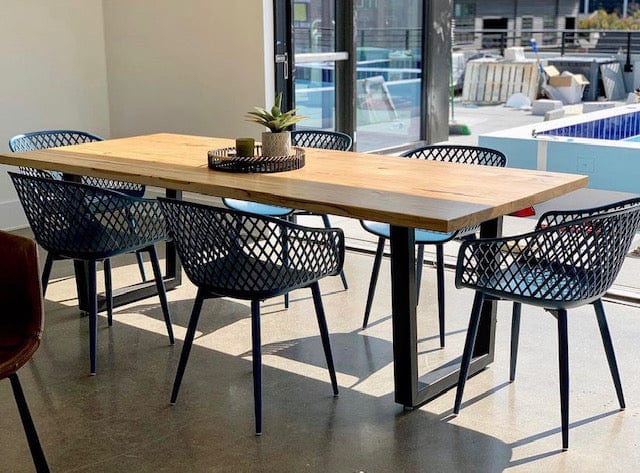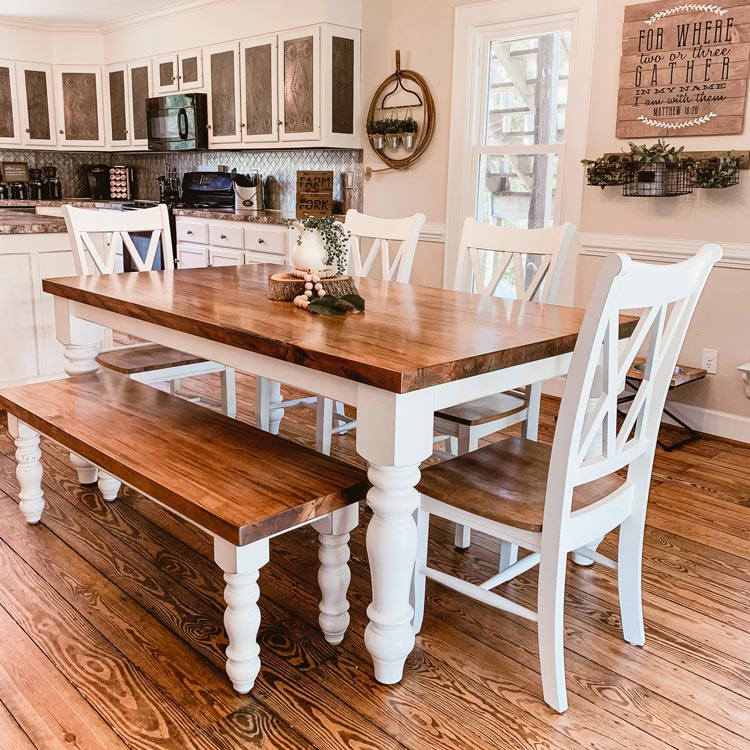Find the Ideal Dining Room Table Legs for Any Interior Design Style
Find the Ideal Dining Room Table Legs for Any Interior Design Style
Blog Article
From Standard to Modern: Discover the Ideal Dining Space Table Legs for Your Style
The choice of dining-room table legs plays a pivotal function in specifying the general character of your room, bridging the space between traditional workmanship and modern-day looks. While traditional designs such as cabriole and turned legs stimulate a sense of classic refinement, modern designs like hairpin and geometric choices present a chance for striking visual passion. Examining the appropriate balance between these styles requires a nuanced understanding of your existing design and individual preference. As you think about these components, the inquiry remains: just how can you seamlessly incorporate these varied leg styles to produce a harmonious dining experience?
Understanding Table Leg Styles
The range of dining-room table leg styles can considerably influence both the looks and capability of the room. Each leg design adds special aesthetic aspects and functional functions, providing to varied style preferences and usage requirements. Understanding these designs is important for choosing the ideal table that aligns with your total indoor layout vision.
For example, tapered legs offer a tidy, timeless look that can enhance a room's style, while stand bases offer security and make the most of legroom, making them optimal for smaller rooms. Hairpin legs, a hallmark of mid-century modern-day style, introduce a commercial style, allowing for a ventilated, open feel. Trestle legs stimulate rustic charm, supplying robust assistance and a sense of eternity.
Wood legs can bring warmth and structure, whereas steel options typically share a sleek, contemporary ambiance. Inevitably, understanding table leg styles is necessary for developing a cohesive eating area that shows individual design while guaranteeing functionality and convenience.
Traditional Table Leg Options
When choosing dining-room table legs, typical options typically personify timeless sophistication and workmanship. These layouts mirror a rich heritage and a commitment to quality, making them suitable for those that value timeless aesthetics.
One of the most renowned conventional leg styles is the cabriole leg, defined by its stylish rounded shape. This style commonly features decorative makings and is most commonly found in Queen Anne and Chippendale furnishings. An additional preferred option is the transformed leg, which flaunts a collection of smooth, rounded shapes that offer a classic look while maintaining security.
In addition, the straight leg, while straightforward, supplies a tough and basic structure that can mix flawlessly with a selection of tabletop designs. For those drawn to ornate detailing, claw-and-ball feet legs stimulate a feeling of splendour and can work as a stunning prime focus in any kind of dining area.
Lastly, stand bases, although not purely legs, offer an alternative typical alternative that enables ample legroom and can be perfectly sculpted. Each of these conventional leg designs adds to the total ambiance of a dining-room, weding function with visual charm.

Modern Table Leg Layouts
Modern table leg designs provide a diverse variety of designs that highlight innovative products and clean lines. These layouts often focus on functionality while acting as striking focal points within an eating space. Minimal appearances are widespread, with legs crafted from materials such as metal, glass, and crafted wood, which add to a contemporary and ventilated feeling.
One prominent layout is the hairpin leg, defined by its slim, conical framework that supplies security without frustrating the table top (dining room table legs). This style is typically discovered in mid-century modern furnishings and can effortlessly match various table shapes. An additional fad is the use of geometric shapes, where legs may take on angular or unbalanced kinds, adding aesthetic passion and a touch of virtuosity

Blending Styles for Special Spaces
Typically, home owners look for to produce distinct dining areas that reflect their individual style by mixing different design aspects. This approach permits for the unification of diverse aesthetics, resulting in a harmonious yet distinct environment. For example, matching a rustic wooden table with streamlined, modern metal legs can create an appealing contrast that boosts the room's general charm.
Additionally, incorporating vintage table legs with modern tabletops can evoke a sense of history while maintaining a modern-day sensibility. Such mixes not just showcase private preference however additionally encourage imagination, enabling property owners to curate a space that feels both personal and inviting.
Color plays a critical function in this blending procedure; selecting table legs that match or contrast with the existing color design why not check here can boost visual rate of interest. For instance, whitewashed legs can soften the daring of a dark table surface, creating a balanced aesthetic.
Tips for Choosing the Right Legs
Selecting the right table legs is necessary for achieving both functionality and visual appeal in your dining area. Begin by thinking about the total style of your room. Typical settings take advantage of legs that feature elaborate carvings or turned designs, while modern spaces may require smooth, minimal designs.
Following, analyze the height and security of the legs. dining room table legs. Common table vary in between 28 to 30 inches in height, so ensure the legs match this dimension for convenience. Furthermore, durable materials, such as wood or steel, can improve security and longevity
Assess the leg shape as well-- choices include directly, tapered, or pedestal designs. Straight legs provide a traditional look, while tapered this hyperlink legs can add a touch of beauty. Pedestal bases offer adequate legroom and are excellent for smaller sized rooms.
Verdict
In recap, selecting the optimal dining-room table legs requires mindful factor to consider of both modern-day and standard styles. Conventional options such as cabriole and transformed legs supply ageless sophistication, while contemporary designs like barrette and geometric forms offer a contemporary touch. By integrating leg design, height, and material with the total design, a cohesive and inviting ambience can be accomplished. Ultimately, the picked table legs must show the desired visual, improving the eating experience within the room.
The selection of dining area table leg styles can significantly affect both the looks and functionality of the area. Ultimately, comprehending table leg styles is necessary for creating a natural eating area that mirrors personal style while making certain functionality and convenience.One of the most iconic standard leg designs is the cabriole leg, characterized by its stylish bent shape. Straight legs use a classic look, while conical legs can include a touch of elegance.In summary, picking the perfect eating area table legs requires careful factor to consider of both contemporary and typical styles.
Report this page